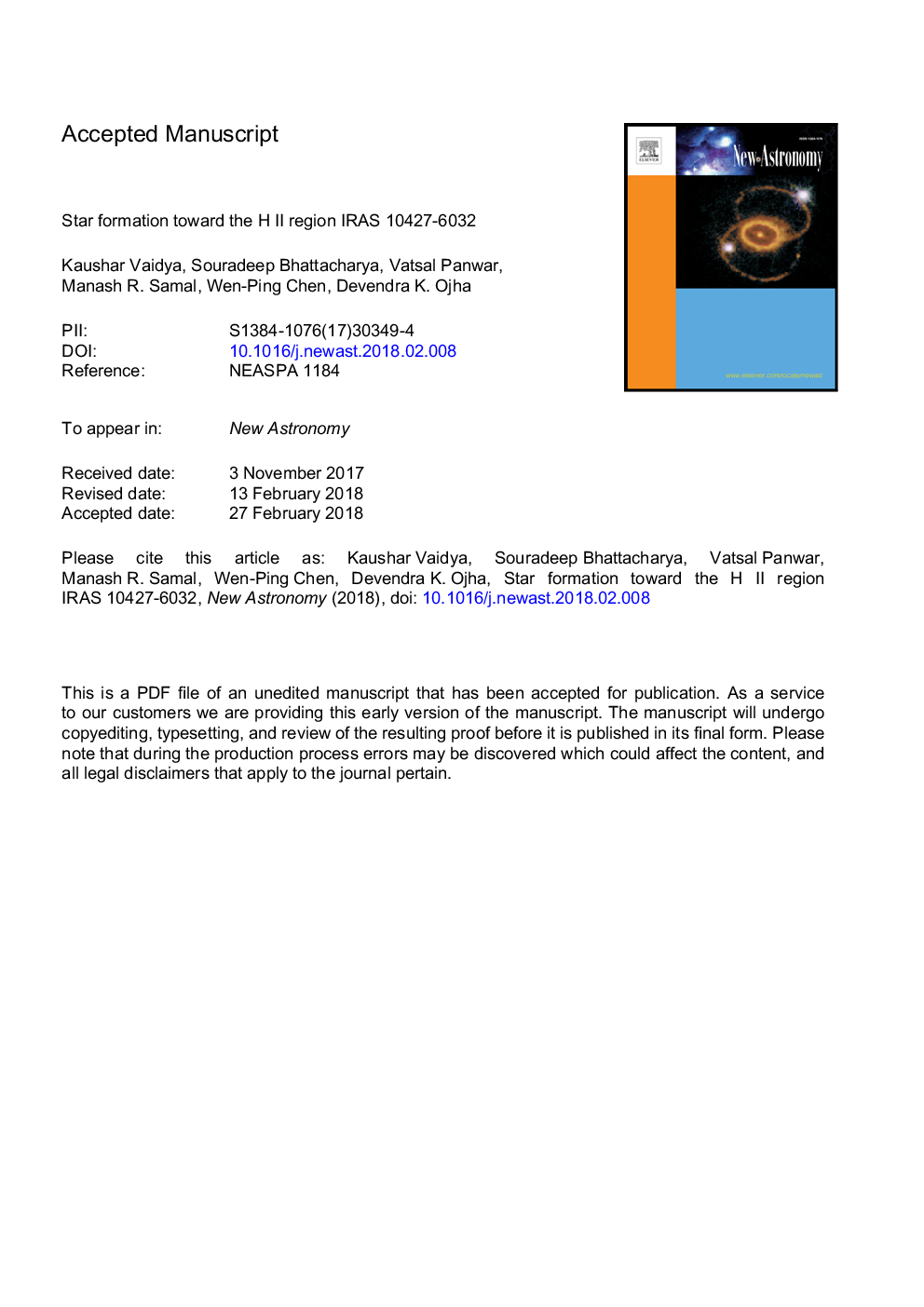| Article ID | Journal | Published Year | Pages | File Type |
|---|---|---|---|---|
| 8141293 | New Astronomy | 2018 | 24 Pages |
Abstract
The formation and properties of star clusters formed at the edges of the H II regions are poorly known. In this paper, we study stellar content, physical conditions, and star formation processes around a relatively unknown young H II region IRAS 10427-6032, located in the southern outskirts of the Carina Nebula. We study this region by making use of the near infrared (near-IR) data from VISTA, mid infrared (mid-IR) from Spitzer and WISE, far infrared (far-IR) from Herschel, sub-mm from ATLASGAL, and 843â¯MHz radio-continuum data. Using multi-band photometry, we identify a total of 5 Class I and 29 Class II young stellar object (YSO) candidates, most of which newly identified, in the 5â²â¯Ã⯠5â² region centered on the IRAS source position. Modelling of the spectral energy distribution for selected YSO candidates using the radiative transfer models shows that most of these candidates are intermediate mass YSOs in their early evolutionary stages. A majority of the YSO candidates are found to be coincident with the cold dense clump at the western rim of the H II region. Lyman continuum luminosity calculation using radio emission indicates the spectral type of the ionizing source to be earlier than B0.5-B1. We identified a candidate massive star possibly responsible for the H II region with an estimated spectral type B0-B0.5. The temperature and column density maps of the region constructed by performing pixel-wise modified blackbody fits to the thermal dust emission using the far-IR data from the Herschel show a high column density shell-like morphology around the H II region, and low column density (0.6 â¯Ã⯠1022 cmâ2) and high temperature (â¼â¯21 K) matter within the H II region. Based on the morphology of the region in the ionized and the molecular gas, and the comparison between the estimated timescales of the H II region and the YSO candidates in the clump, we argue that the enhanced star-formation at the western rim of the H II region is likely due to compression by the ionized gas.
Related Topics
Physical Sciences and Engineering
Physics and Astronomy
Astronomy and Astrophysics
Authors
Kaushar Vaidya, Souradeep Bhattacharya, Vatsal Panwar, Manash R. Samal, Wen-Ping Chen, Devendra K. Ojha,
